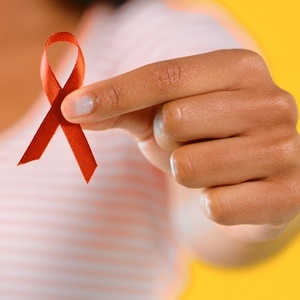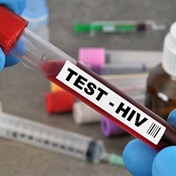
For the past few decades, myths and misinformation about HIV/Aids have put people at increased risk of infection, causing the condition to assume pandemic proportions, especially in South Africa.
Ahead of World Aids Day, South African physician Dr Sindi van Zyl, a specialist in the HIV and Aids field, spoke at the Cipla HIV/Aids press workshop about what everyone – regardless of whether you’re HIV-positive – should know.
If you have HIV, it can take up to 20 years for symptoms to show
HIV attacks the CD4 cells, a type of white blood cell, and uses them to make copies of the virus (called the viral load) and eventually destroy them.
This process can go on for many years without any symptoms, which is known as the asymptomatic phase. During this time, you have no idea the virus is in your system, although your immune system is being weakened in the process. “South Africa has a problem of what I call the ‘blind spot’,” says van Zyl. “There are groups of society in our country who believe they’re ‘immune’ to HIV, who think it happens to 'them' but never to 'me’. But there’s no them or me with HIV.
“If you’re sexually active, then you’re at risk of HIV, because this is how HIV is primarily transmitted. This is why it’s crucial for everyone to test for HIV every 6–12 months, regardless of where you come from.”
There are HIV self-test kits on the market, but most people are unaware of it
There are now several approved home-testing HIV kits on the shelves. If you’re pressed for time, van Zyl says these at-home tests are a really convenient option.
Professor Ian Sanne, Divisional Head at the Clinical HIV Research Unit (CHRU) and CEO of Right to Care, also told Health24 that self-testing is recommended, but one shouldn’t panic should the results indicate you’re HIV positive. “We recommend that if the result shows you’re HIV positive, you don’t get distressed and rather have a second, complementary test done at a health clinic or by a general practitioner.
“The kit works very well and the studies that we’ve done on these kits show very good results, but the prevention method still needs to be linked to the self-test kit,” Sanne explains.
U=U: Undetectable = Untransmittable
The International Aids Society endorsed the U=U consensus statement of the Prevention Access Campaign. This statement makes the critical point that not every HIV-positive person is infectious. A person living with HIV who has an ‘undetectable viral load’ will not transmit the virus to their partner. And as long as your viral load remains undetectable, your chance of passing on HIV to a sexual partner is zero.
“And this is important because not only does this prevent transmission, but it also changes the way people feel about themselves," says van Zyl.
"When an HIV-positive person’s viral load becomes undetectable, it changes the way they live their life: they can have condomless sex, they can have babies, mothers can breastfeed, for example. If you’re 'undetectable', you can essentially live the life of a normal, healthy person.”
It is important to remember that having an undetectable viral load does not mean you are cured of HIV. If you quit taking treatment, your viral load will increase and become detectable.
Proxy testing is not encouraged
“Proxy testing is when you assume you’ve HIV negative because your partner tested negative, and we don’t encourage that,” says van Zyl. “Each person has to know their own status.”
You need 3 or more ARV drugs to treat HIV
Antiretroviral therapy (ART) will always include a combination of three or more ARVs which is taken to suppress the virus’s ability to make copies of itself. However, van Zyl says that the majority of people believe that two ARVs are sufficient.
“We always give more than two drugs to block the life cycle of HIV, because different drugs work at different phases of the life cycle to stop the virus from multiplying. And this is why taking medication every day is absolutely crucial.”
Side effects of current ART not that bad compared to past ART
The treatment for HIV that we have today is much superior to what we had years ago, says van Zyl.
“People’s bodies used to get deformed because of the treatment in the past. And that put people off medication. And there were a few drugs that caused lipodystrophy [abnormal distribution of fat], but we’ve moved away from those drugs and only use them if we’re absolutely desperate.
“The newer drugs, however, don’t cause that. And if the treatment you’re on brings about side effects that are unbearable, I encourage you to tell your doctor so that the medication can be changed. Don’t tell yourself to ‘just hang in there'.”
HIV prevention is really a 'basket of things', says van Zyl
Condoms: When used correctly and consistently, condoms are highly effective in preventing HIV.
Abstinence: It’s the only 100% effective way to prevent HIV, although it can be challenging. “We’re sexual animals, and asking us to go against something that is essentially part of our nature is really difficult.
"We’ve been preaching it, but it doesn’t always work,” said Dr Michelle Moorhouse, co-principal investigator of ADVANCE and Head of treatment strategies at Ezintsha.
This is why experts recommend that everyone is aware of all forms of prevention strategies.
Post-exposure Prophylaxis (PEP): PEP is treatment that is used for preventing HIV after exposure. However, it should only be used in emergency situations and started within 72 hours after a possible exposure to HIV. The treatment is taken for 28 days, and can only be taken if you’re HIV negative.
For this reason, your healthcare practitioner will test you for HIV before prescribing PEP, and you may be required to test for the virus for up to 6 months after you begin taking PEP to ensure you stay HIV-negative.
Pre-exposure prophylaxis (PrEP): People who are at very high risk for HIV must take PrEP daily to prevent HIV. Trials for this have shown more than a 90% success rate. Van Zyl explains that with this treatment you have to commit to three-four monthly check-ups.
“There are different regimens, but the pills work if you take them. And there are actually medical aids in South Africa that cover this. It won’t cost you more than R250 per month, considering the generic forms out there.
“South Africa is lagging behind a lot when it comes to PrEP, and we shouldn’t. It’s one pill, once a day, and it works,” says Van Zyl.
PrEP isn’t available at every clinic in South Africa. However, by March 2020, it’s expected to be rolled out at 1 000 facilities across the country.
World Aids Day has been taking place on 1 December every year since 1988, and is dedicated to raising awareness of the Aids pandemic, caused by the spread of HIV infection, and mourning those who have died of the disease.
Image: Getty




 Publications
Publications
 Partners
Partners















